Malta is a feast for the senses, which is why I decided to write this comprehensive guide to the top 20 places you must see in Malta. Visitors may have difficulty choosing from all that the island offers: world heritage sites, charming architecture, first-class hotels, fine dining, diving, boating, shopping and seasonal festivals and concerts.
The island’s climate lends itself to the number of outdoor activities available. Winters are rainy, but mild. Summer weather ranges from warm to hot, with little to no rain.

Getting around Malta with the newly established bus system is now easier than ever. Traveling by bus is definitely the the most cost-effective method of public transportation. Mainland routes pass through the main bus terminal in Valletta while direct routes provide service through smaller towns and villages without a stop in Valletta. Bus services run from 5:30 am to 11:00 pm with night buses in select areas. Click here to learn more about tickets, pricing and bus schedules.

Private car hires and taxis can also be contracted to transport you to almost anywhere on the island. Book a shuttle airport transfer to your hotel here. Taxis in Malta are white, but not all are fitted with meters so be sure to agree on a rate before you take off. Renting a car yourself allows you the most freedom and costs approximately €16 to €28 per day. In true English style, driving is on the left side of the road. All road signs are in Maltese and English. The Malta Pass is also a convenient option for sightseeing around the Maltese islands. It provides visitors with access to over 50 attractions as well as open-air sightseeing buses on Gozo and special discounts at stores and restaurants. You can purchase a 1, 2, or 3-day pass.
Check out our guide to the 10 Places you Must See in Gozo
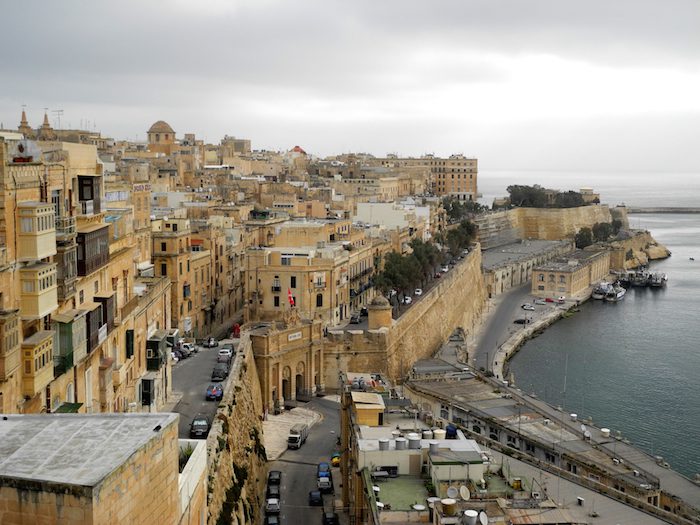
No trip to Malta is complete without a visit to Valletta, the nation’s capital city and cultural center. Thanks in part to its Baroque character, Valletta stands out as one of the most authentic capital cities of Europe. In Valletta, you will feel as though time stood still because of the remarkably preserved infrastructure. Valletta has been recognized as a UNESCO World Heritage Site since 1980.

The Knights of St. John made invaluable contributions to the city’s construction and character during their 268-year long occupation of the island, which lasted from 1530 to 1798. Valletta was named after Jean Parisot de la Valette, a French-born nobleman and Knight of St. John who commissioned the construction of Valletta in 1566.

The Knights’ symbol, the eight-pointed cross, came to be synonymous with the island and eventually became known as the Maltese cross. It is still presented proudly on the Maltese flag and on Maltese euro coins. The Knights, with the help of the native Maltese, forged a walled citadel that now serves as the city’s administrative district.

Valletta suffered extensive damage at the hands of fascist Italy during the Second World War. Many buildings like the Valletta Royal Opera House were completely annihilated. Bullet and bomb scars can still be spotted throughout the city.

The city boasts palaces, museums, and forts. Most sites are located walking distance from each other. One of Valletta’s natural harbors, the Grand Harbor, is a popular European port of call for luxury cruise ships, private catamarans and lavish yachts. Valletta from the water is a sight to behold. A Grand Harbor cruise is an excellent way to see the city’s stunning skyline and gain a sense of its several distinct neighborhoods. Book a 4-hour walking tour of Medieval Valletta here.

Birgu (Vittoriosa) is situated opposite Valletta along the Grand Harbor. It is where the Knights of St. John first established themselves after arriving in Malta. The Birgu waterfront is lively as it is scenic, and has a host of restaurants and cafés.

Located about six miles (9.5 km) south of Valletta is the small town of Qrendi. The two megalithic complexes of Hagar Qim and Mnajdra are situated close to the coast about 500 meters apart. Hagar Qim and Mnajdra are fascinating World Heritage Sites that date back to the Ggantija Phase (3600-3200 BC). The society responsible for the construction of both temple sites are often referred to as the ‘temple builders.’ Little is known about these people, other than they most likely came from modern-day Sicily and lived peacefully as hunter-gatherers.

Mnajdra may look like a crude structure of limestone slabs, but it is truly a wonder how the temple builders managed to construct it without the use of metal tools. Hagar Qim shares a similar architectural design with its basic plan of circular chambers and a central passage. The Mnajdra complex features three temples overlooking an oval forecourt. The third temple dates back to the Tarxien phase (3150-2500 BC) and is the most impressive of the three. Stone benches and spiral-shaped carvings still exist inside.

Hagar Qim is located a short walk away along a raised boardwalk. It stands on a hilltop and overlooks the tiny island of Filfla. Hagar Qim is comprised of four structures. The Main Temple features carved recesses in the floor slabs. It is theorized they were used to collect blood from animal sacrifices. The Niche is a small enclosure that features two altars and pit-marked slabs. These multiple circular indentations are typical in most Maltese Megalithic structures, and are believed to represent the stars in the night sky. Both Hagar Qim and Mnajdra are massive, but mysterious.

The truth is no archaeologist in the world can know exactly what these massive structures were used for. Some believe they are astronomically related, while others believe they were used for fertility goddess worship. What is inarguable is that their construction was a feat of engineering for the time. Book a tour of the megalithic temples of Tarxien, Hagar Qim, and Mnajdra here.

Would you go to Rome and skip the Coliseum? Or to London and leave out Big Ben? I think not. The Hypogeum was unquestionably one of the highlights of my Maltese journey, and is an attraction that you cannot afford to miss. An exquisite example of architecture in the negative, the Hypogeum is a subterranean complex of halls and chambers carved out of coralline limestone. The oldest section of the Hypogeum dates back to 3600 BC. It was discovered by accident in 1902, by a stonemason repairing the floor of a house. Unbeknownst to him at the time was that he was standing over a prehistorical cavity that would eventually be deemed a UNESCO World Heritage Site in 1980.
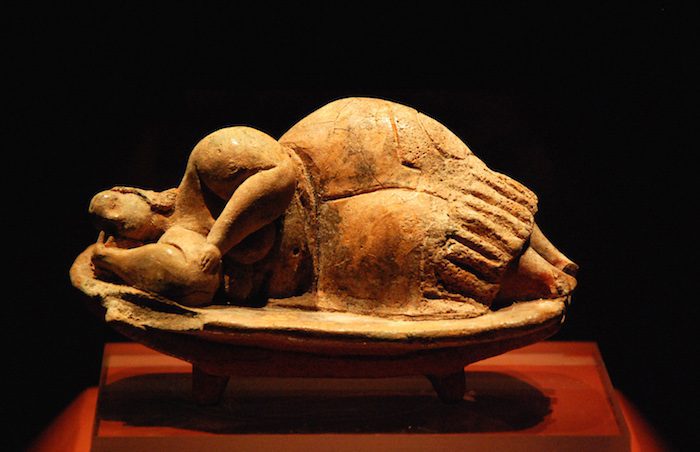
The structure consists of three levels: upper (3600-3300 BC), middle (3300-3000 BC) and lower (3150-2500 BC). Excavations of the Hypogeum revealed a wealth of knowledge about Maltese Bronze Age society, namely their religious practices. The remains of over 7,000 individuals were discovered in the lower level of the Hypogeum. Seven ominous steps lead down to the necropolis where the remains were found. A Speaking Chamber can also be seen. A Speaking Chamber is a type of Oracle Hole, a hole in a temple wall. Oracle Holes are common throughout many Maltese prehistoric temple sites, but little is know about how or why they were used. The one found in the Hypogeum is a depression that produces a reverberating echo.

Other characteristic features of the site are the ochre painted chambers, spiral-shaped carvings and the “holy of holies” cavity. The reddish-brown ochre pigment used to decorate the Hypogeum can also be found at other prehistorical sites in Malta and Gozo. The type of pigment the temple builders used is evidence to support the theory that Malta’s first inhabitants came from Sicily. Ochre is not native to the Maltese islands but it is found in Sicily. The “holy of holies” chamber has become an iconic image of Maltese history, and has given us a clue as to what the roofs of Malta’s aboveground temple structures may have looked like, since none have survived. The Hypogeum is a structure like no other. It is remarkable how the temple builders managed to construct it without the use of metal tools. Animal bones and horns were most likely used to laboriously chip away at the limestone. A building project like the Hypogeum likely took years to complete.

Because it is underground, the Hypogeum has a sensitive microclimate. Every effort has been made by Heritage Malta to conserve this national treasure, and that is why admission and tours are strictly controlled and photography is prohibited. Audio tours are mandatory, as is pre-booking your entrance. Only small groups of visitors are let in at one time and the audio set dictates the pace for the entire tour. Audio sets are available in multiple languages. Tickets go fast! You have to reserve weeks, sometimes months in advance to visit the Hypogeum so I would suggest doing so promptly after your flights to Malta are booked. Tickets cost €20 for adults and €12 for children 6-11 years old. Children under 6 are not permitted. The Hypogeum is located 3 miles (5.6 km) south of Valletta in the town of Paola.

This Roman Catholic Church is also referred to as the Rotunda of Mosta or the Mosta Dome. It was designed by Maltese architect Giorgo Grognet de Vassé during the 1830’s, and built upon the site of a previous church. The church’s striking dome is the third largest unsupported dome in Europe, and the ninth largest in the world. Gronget de Vassé’s inspiration for the church stemmed from the Pantheon in Rome, specifically the style of the main portico, Ionic columns and the massive, central dome.

The interior of the Mosta Dome church is ornate and elegant. Inlaid marble floors, dozens of wooden pews and an extravagant altar comprise the main room. Looking up at the inside of the dome will give you a celestial feeling. You may notice that a small section of the dome is damaged. But it’s far from paint job-gone-wrong; it is actually a battle scar sustained during WWII. On April 9, 1942 a German Luftwaffe bomb was dropped from the sky, piercing the rotunda while 300 parishioners were inside. Miraculously the bomb did not detonate and all 300 lives were spared. The damage to the dome was severe but was eventually patched up.

A replica of the bomb is now housed in a back room of the church to commemorate the 1942 “Mosta Bomb Miracle.” The event is a legend and, for many, is seen as a testimony of God’s love and mercy. Holy Week is an especially busy time in and around the church, with Good Friday bringing in hundreds of parishioners from around the island. Mosta is located approximately 6 miles (10.8 km) west of Valletta. Entrance to the church and to see the replica of the bomb is free.
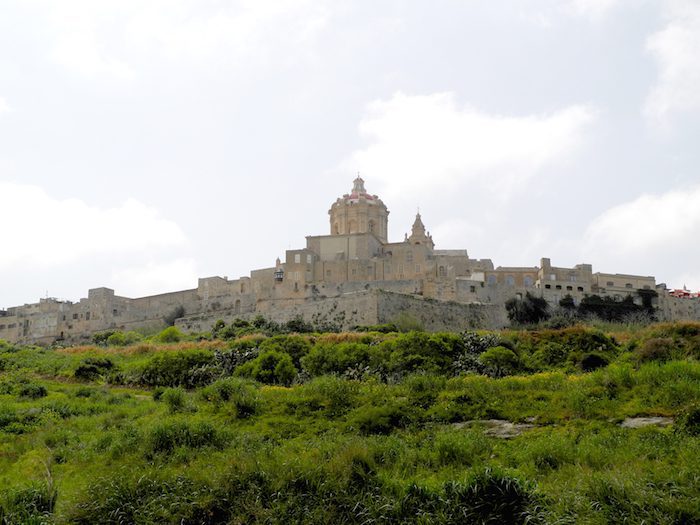
The Silent City, as Mdina is often called, is an ancient walled city located 7 miles (12.5 km) west of Valletta in central Malta. The history of the fortified city is much grander than its petite size. Rabat is the modern city that surrounds Mdina and often is referred to as the suburbs of Mdina. Rabat is also much larger with an estimated population of 13,000 while Mdina has only about 300 permanent residents at any given time.

The Phoenicians first founded Mdina during the 6th and 7th centuries BC. They called the island Maleth, a precursor to its current name. Maleth signified “safe harbor” for the Phoenicians, who at the time had much of the Mediterranean under their power. After the Romans tried their hand at ruling Malta, the island eventually came under Arab control during the 9th century. They are responsible for reducing the size of Mdina and constructing its bastions. When the Knights of St. John arrived in Malta, they proclaimed Mdina their capital city, restored the crumbling edifices and used its palaces as private residences. It was where each Grand Master swore an oath to protect the islands of Malta. From then on, Mdina took on the title of “Citta Notabile,” or the Noble City.

Enter Mdina by walking across the drawbridge and through its elegant, Baroque-style South Gate. Below you will find a formidable drop where a moat once protected the city. The gate is a reproduction of the original erected in 1724 by Grand Master Antonio Manoel de Vilhena. The commanding entrance leads directly into a relic of history. The cobblestone streets are narrow and carry with them a nostalgic sensation.

The St. Paul Cathedral is regarded as the crown jewel of Mdina. It was recently restored after years of decay and damage threatened its structure. It now sits proudly in St. Paul’s square dedicated to the beloved saint who is said to have shipwrecked in Malta and preached in the grotto in the nearby town of Rabat

Located just steps from the St. Paul’s Cathedral is the Cathedral Museum (open Monday-Friday 9:30 am to 4:30 pm, Saturdays 9:30 am to 3:30 pm. Admission is €2.50). Other Mdina attractions include Vilhena Palace, Mdina Dungeons, Palazzo Falson, St. Agatha’s Chapel and Bastion Square. It takes about an hour to walk the entire city. Visitors also have the choice of sightseeing by Karozzins (horse-drawn carriages). The typical cost for a Karozzin ride is €1 per minute. Book a half-day tour of Mosta, Ta’Qali Crafts Village & Mdina here.

The Catacombs of St. Paul comprise an underground Roman necropolis dating back to the 4th century AD. Romans deemed it unclean to bury the deceased within city limits, so this catacomb complex was most likely used as the final resting place for the dead from surrounding cities like Mdina. Descending into the tombs may send a chill up your spine as your eyes dart toward the loculi (wall recesses). Some are small, others large to accommodate the corpses of children and adults. Numerous family crypts have also been discovered. There is room for about 1,000 bodies in total.

The Catacombs of St. Paul posses both religious and historical significance. Evidence from excavations suggests that Christian and Jewish burials took place here. The Agape Tables found in the main crypt were common among early Christian catacombs. It is likely they were used for ritualistic commemoration of the dead. Agape Tables have also been discovered in other catacombs like the ones in Mqabba and in Rome. The Catacombs of St. Paul may have been synonymous with death but they also helped save lives. Hundreds of people sought shelter in these crypts during air raids in WWII.

The catacombs are open Monday through Sunday 9:00 am to 5:00 pm. Tickets cost €5 for adults 18-59 years, €3.50 for youths 12-17 years and for those 60 years and over and €2.50 for children 6-11 years. Children under 6 enter free of charge.

This 17th century Baroque church was built over the grotto where it is believed the apostle St. Paul stayed and preached during his stay in Malta in 60 AD. The New Testament of the Bible (Acts 27-28) contains stories about St. Paul and his role in spreading Christianity. The story in a nutshell: Paul was arrested in Judea and put on a ship to be transported to Rome. He was shipwrecked (in what is now called St. Paul’s Bay) and lived in Malta for 3 months in 60 AD. During this time he was instrumental in establishing the Christian faith in Malta.

The Grotto is a cavernous underground space with only a few religious items including a plaque commemorating Pope John Paul II’s visit to Malta in 1990, and a statue of St. Paul, which was gifted in 1748 by Grand Master Pinto. Access to the church and grotto is free of charge.

By the second century BC, the Roman Empire and Carthage were wrestling for dominance in the Mediterranean. After centuries of power struggles, the two super powers engaged in three major battles, known as the Punic Wars. In 146 BC the Romans defeated their opponents, completely destroyed the city of Carthage (in modern-day Tunisia) and took control of Malta.

The Domus Romana is a museum that contains what remains of an ancient Roman townhouse. The mosaics, which have been restored, date back to the first century BC. Like those of Sicily and Pompeii, the mosaics are some of the oldest and grandest every discovered. What remains of the structure gives clues as to how wealthy Roman families lived. The architecture of the townhouse has Hellenistic elements, namely the peristyle (open courtyard/ garden surrounded by four arcades). Each townhouse once featured numerous Doric-style columns to support the shaded porticos beyond them.

Intricate mosaics were common throughout Roman courtyards and the columned porches around them. The ones in Domus Romana are examples of an especially difficult technique of mosaic art that creates the illusion of three-dimensional figures. One such mosaic depicts two birds perched on a golden bowl. Mosaics were a symbol of status and culture for the ancient Romans. The Domus Romana museum also contains exhibits of Roman artifacts found throughout Malta.

Dingli is a small village located at the southwest edge of the island only a couple of miles from Rabat. The area of Dingli is one of the highest in Malta at around 825 feet (250 m). The cliffs of Dingli give splendid views of the open ocean and of the Maltese islet of Filfla.

Because of its strategic location high above the rest of the island, Dingli has been continuously inhabited for thousands of years. Deep-set, grooved paths in the limestone were probably made by Malta’s prehistoric civilizations. It is likely they established a quarry in the area to harvest boulders for their constructions.
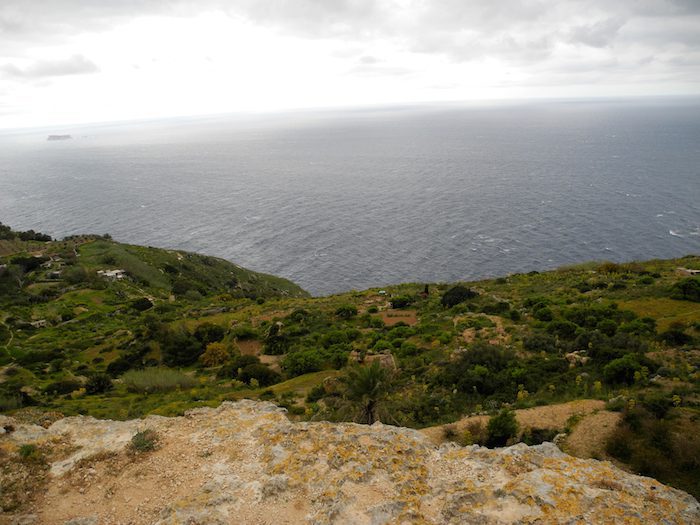
Thankfully, the uphill trip doesn’t have to be made on foot anymore and a car can easily take you to the top. Park your car at the tiny chapel dedicated to Mary Magdalene, and feast your eyes. The unobstructed views of the blue ocean below are expansive and extraordinary.

T’a Qali is a small village located six miles (11 km) west of Valletta in central Malta. The main attraction of T’a Qali is its artisanal section where local crafts take center stage. Maltese artisans showcase and sell their master works to locals and tourists alike. Ceramics, painting, lace making and glass blowing workshops invite visitors to experience Malta’s centuries-old traditions.

Director Paul Said founded Valletta Glass in 1979. What started as a small-scale operation has since blossomed into a full-fledged workshop and store. The master glass blowers at Valletta Glass put on quite a show for every visitor, but for them it’s just another day at the office. Visitors watch on as the glass blowing process is demonstrated. First, colored sands are carefully selected and mixed. Then, the mixture is melted in an oven with a temperature exceeding 1000° F.

A molten blob eventually emerges and is affixed to the end of a long, hollow rod. Continuous turning and swaying begins to give the blob its shape. A few blows into the end of the pole create an air pocket inside the figurine. At that point it is up to the artisan to give shape and purpose to the figure. Soggy newspaper bundles are used to smooth out any uneven surfaces and iron molds are used for a more uniform contour. The vase (or other decorative item) is then left to cool down.

Vast selections of glass pieces are available for sale in the gift shop. From large serving trays to small Christmas tree ornaments, the artisans at Valletta Glass have produced hundreds of beautifully crafted items. Precious metals like gold are occasionally incorporated into the glass making process. The gilded swirls give any piece an elegant feel, but these do come at a higher price. Not to worry because you don’t have to spend a lot to take home a piece of artisanal Malta. There is a souvenir to fit every budget and taste.

The Meridiana Wine Estate has taken center stage in the world of Maltese winemaking traditions, and has led the pack in terms of quality. The energetic and passionate Mark Miceli-Farrugia began Meridiana Winery in 1987 with the intention of using local grapes to create wines everyone could enjoy, regardless of sophistication of palette.

Mark and his family have helped Meridiana become a contender in Mediterranean wine production, and have made their Isis Chardonnay one of the most popular white wines of Malta. Meridiana’s products include Isis, Mistral (Chardonnay), Astarte (Vermentino), Melqart (Cabernet Sauvignon and Merlot), Bel (Syrah), Nexus (Merlot), Celsius (Reserve Cabernet Sauvignon), and the red and white premium Fenici wines. Names like Isis, Melqart and Bel are names of ancient Phoenician gods and goddesses. The allusion to one of Malta’s ancient societies is just another way Mark has incorporated the island’s unique past into Meridiana’s legacy.

A visit to Meridiana Wine Estate is an ideal way to spend a sunny afternoon in Ta’ Qali. The estate sits on 47 acres of land that once served as a military base during WWII. The main building was an old farmhouse that has been restored into a fully functioning modern restaurant and offices. The rooftop terrace provides panoramic views of the vineyards below and surrounding towns.

Visit the Meridiana website or contact the estate directly by phone to organize a tour and tasting appointment. You can also stop by the cellar shop anytime from Monday to Friday 9:00 am to 4:00 pm or Saturday from 10:00 am to 12:00pm.

Marsaxlokk (pronounced mar-sah-shlock) is a fishing village located on the southeastern coast of Malta about 6 miles (10.8 km) from Valletta. Marsaxlokk harbor is second only to the Grand Harbor in size. This peaceful inlet was once the landing point of the Ottoman Turks during the Great Siege of 1565. The Knights of St. John successfully defeated them and retained control over Malta until 1798. This was the year that Napoleon Bonaparte invaded the island and expelled the Knights of St. John for good.

Nowadays, the village is one of the most picturesque locations in Malta and one of the finest places to dine on fresh seafood. Colorful Maltese fishing boats called luzzus (pronounced loot-su), dot the serene harbor and give Marsaxlokk its vibrant character. These boats are unmistakable because they are painted in pulsating reds, blues, yellows and greens. Their most distinctive feature is the pair of eyes painted on the bow. This custom began with the Phoenicians and Greeks and is believed to ward off evil.

Fishermen take pride in their luzzu boats, and regularly use them to bring back the daily catch. Marsaxlokk features an outdoor market and dozens of seaside restaurants to lure you in for fresh fish. Like other coastal towns throughout the Mediterranean, the pace in Marsaxlokk is slow. Take your time capturing photos of the bay before strolling along to find the perfect lunch spot. Book a 5-hour tour of Malta’s Blue Grotto and famous Sunday Market in Marsaxlokk here.

Like the shrine in Fátima, Portugal, the Sanctuary of Our Lady of Mellieha is a Marian shrine recognized by the Catholic Church. Places like these are dedicated to the Virgin Mary, miracles attributed to her and her apparitions. Marian shrines can be found throughout the world in places like Poland, Turkey and France. The most famous Marian shrine is probably the Basilica of Guadeloupe in Mexico City.

The Sanctuary of Our Lady of Mellieha was constructed around a cave where it is believed the apostles St. Like and St. Paul visited in 60 AD. The sanctuary has a chapel and a sacristy full of gifts from devotees, but the most significant feature is the icon painted on the cave wall. The painted figure of the Virgin Mary with a young Jesus Christ in her arms is attributed to St. Luke. The icon was painted directly onto the limestone, and is considered to be the oldest surviving painting of Mary in the Maltese islands. In 1587, Bishop Tommaso ordered the original icon to be painted over, but restorative experts were able to show what the original one looked like.

The sanctuary itself has been a place of pilgrimage and worship for centuries. Even Pope John Paul II came to visit and bless the sanctuary in May of 1990. A commemorative plaque is on display in his honor directly in front of the chapel’s main altar. Thank you letters, coins and gifts are strung on the walls of the sanctuary. The sacristy contains antique oil lamps and religious art given to the sanctuary. Devotees like the Knights of St. John, European monarchs and the local Maltese have donated gifts to help with the upkeep. The monumental arch at the entrance was erected in 1719. It honors a miracle of rainfall following a drought on the island. According to the pilgrims who were present, there was a downpour of rain after they prayed to the Virgin Mary.
Prayer to Our Lady of Mellieha:
O Blessed Virgin, our forefathers venerated you in the sacred cave of Mellieha from the first dawn of Christianity. As they always put their trust in you, you always delivered them. Even now, where you stand crowned queen, cast on us your sweet smile and deliver us from the temptations of hell and intercede for us in our needs. Let the Catholic Faith, our love for the vicar of Christ, and charity towards our neighbors shine on us always. Amen.

Malta’s geographic location in the Mediterranean is a strategic one that was highly sought-after by Italian and German forces during WWII. At the time, it was one of Britain’s most valuable naval bases. Beginning in June 1940, air attacks were carried out over Malta. Italian bomber jets dropped over a thousand tons of explosives over densely populated Malta. In the midst of constant air strikes and submarine attacks, and with few planes and weapons of its own, Malta somehow managed to resist capture. For this it was awarded the George Cross medal for unyielding bravery. The award was given by King George VI and is a proud achievement for the island nation because it honors bravery in the face of unspeakable acts of war.

At only 122 square miles (196 km2) Malta is one of the most densely populated countries in the world. During WWII, the Maltese had to devise ways to survive the bombings. One of the original shelters used at the time is located steps from the Sanctuary of Our Lady of Mellieha. Visitors can enter the shelter and experience where many people of the area hid to survive. The shelter is about 1,650 feet (500 meters) in length and was built in a T-shape. It was carved by hand directly out of the limestone and could accommodate over 1,000 people.

The shelter was a fully functioning mini city with a maternity ward and infirmary, which are the only two rooms to have tiled floors. While some of the rooms were made large enough to accommodate entire families, others are small and cavernous. Crevices in the walls were used to hold candles, which was the only source of light for days at a time. The WWII shelter at Mellieha took in refugees from all over the island. Although unclear how many lives were spared because of it, the shelter serves as a sobering reminder of Malta’s role in WWII. The shelter is open Monday through Saturday 9:00 am to 3:30 pm.

On the coast of southwestern Malta, near the towns of Qrendi and Zurrieg, is the heralded natural wonder, the Blue Grotto. It is not just one, but a entire labyrinth of several sea caverns that provoke awe and wonder in all who see them. The caves were formed from gradual seawater erosion of the natural rock. The Blue Grotto is the largest in the cave complex and is one of the most iconic images of Malta.

The others have names like Window, Elephant Foot and Honeymoon cave. Maltese fishermen who used to earn their livings in the surrounding sea named the caves for their distinguishing features. You can tour the Blue Grotto by boat to get amazing views of the interior. Inside, you will discover an array of multihued swirls on the cave walls caused by naturally occurring mineral deposits, and see the blooming underwater flora beneath the surface of the waves.

Your captain will give brief explanations of each cave as you enter. Boat tours and scuba dives can be arranged at the marina. Boat tours last about 20 minutes and cost €7 for adults and €3.50 for children. No prior booking is necessary.

Forget about your tender feelings toward Thumper and Bugs Bunny. Maltese rabbit is some of the best in the world and an absolute MUST for any first-time visitor and self-proclaimed foodie. Rabbit is a staple in the Maltese diet and when it’s served, there’s no refusing. There are many ways to prepare rabbit, and you won’t be disappointed when you come to Charlie’s Inn because they prepare rabbit every way imaginable. This family-owned establishment seems to effortlessly create some of the best homemade dishes I have had in all my travels.
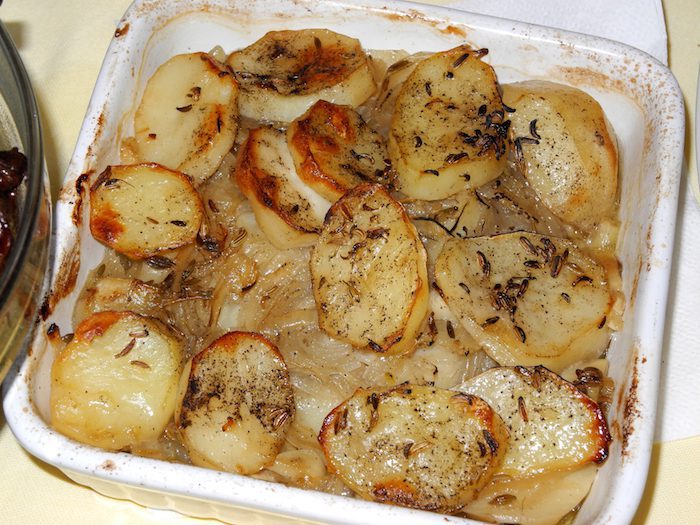
Traditionally a rabbit house, Charlie’s Inn has recently expanded its menu to include other traditional Maltese favorites and French-inspired dishes. Whether you go for the house specialty (fried rabbit), or a fresh-caught fish filet with vegetables, you can be sure you’re getting high quality ingredients prepared by a classically trained chef with years of experience and a passion for Maltese gastronomy (plus he’s the owner’s son).

Charlie’s Inn serves food family-style- the portions are generous and are meant to be shared. Top off your rabbit with a bottle of Merlot and make yourself at home. Charlie’s Inn is about a 25-minute drive from Valletta.

Rebekah’s is hands-down my favorite restaurant in Malta. Managing Director, Manuel Attard, and his brilliant staff present guests with a truly unforgettable dining experience. What sets Rebekah’s apart from other Maltese eateries is superb food quality, rich flavors and an intimate setting.

Attard’s commitment to quality starts with changing the menu two to three times a year to incorporate seasonal foods, ensuring patrons taste only the best. Rebekah’s features indoor and outdoor dining in a lush courtyard setting. Begin your meal with a bottle of 1551 Serkuzan-Syrah (Ta’Mena Wine, Gozo) before ordering appetizers and main dishes. Each course should be enjoyed with ease (trust me, you’ll wish you had an extra stomach). Portions are generous, and prices are more than reasonable considering the quality and skill of the dishes.

For your convenience, Rebekah’s provides pick-up and drop-off services for patrons staying in nearby hotels, including the Radisson Blu Golden Sands, at no extra charge. Just be sure to book your table well in advance and mention that you will need a ride there and back to your hotel. It is no wonder Rebekah’s proudly displays culinary awards on the wall and why celebrities frequently dine here. The food is excellent and the service is first class. Rebekah’s is a must when in Malta.
Rebekah’s is open Monday to Saturday from 6:00 pm to 10:30 pm and Sundays from 12:00 pm to 2:30 pm.
Malta may be small, but it certainly has no shortage of things to see, do and eat! Aside from the millennia of history, the food is what most blew me away. Maltese culinary traditions are unlike any other culture because they incorporate the island’s local flavors with Italian and Arabic cooking methods and recipes. This is not the place to visit if you plan to diet, so make room for the pastas, stews, cheeses and risottos that you’ve been dreaming of.

Maltese wines, although not as well known in Europe, are also savory and masterfully created. Check out the island’s pride, Meridiana Wine Estate, and sample their famous Isis Chardonnay. If I had to choose one restaurant from this guide that you cannot miss, it would be Rebekah’s in Mellieha. I dined there for dinner one night and it was one of the tastiest meals I have had in my life.

I have not yet gotten my scuba certification, but I know that Malta has fantastic dive sites for those visitors that are certified. All three Maltese islands feature crystal clear blue water ideal for maximum visibility. At the moment there are seven popular wreck sites around the Maltese islands.
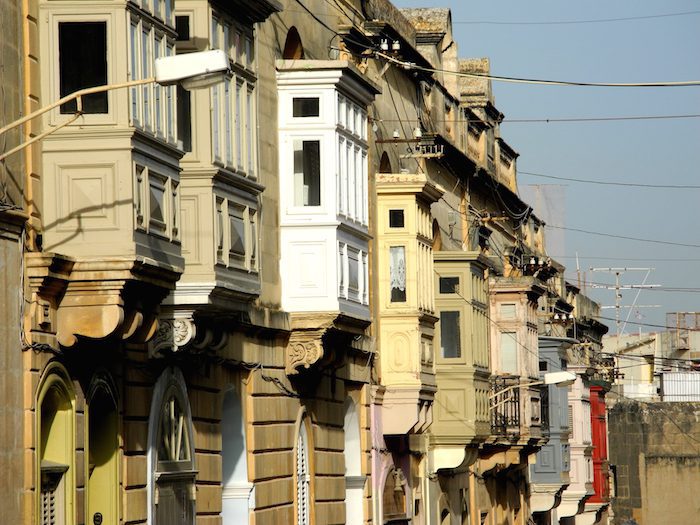
When you’re touring the different cities, towns and villages of Malta, you will notice that each has its own distinctive Coat of Arms, which is a tradition brought over by the Knights of St. John. As a travel project, take pictures of each one you find. They are proudly displayed on parking meters, sewer caps and in other inconspicuous places around the island. You will be surprised at how many there are.

Be sure to double-check the bus schedules. Bus services run from 5:30 am to 11:00 pm, with night buses only in select areas. The buses get packed on weekends, so plan to wait in line during high tourist season (May through August), especially at the Valletta stop if you are heading to the St. Julian’s/ Silema area for dinner. Last, but not least, remember to reserve your admission to the Hypogeum well in advance. The waiting time can be months and it is man made wonder that would be a shame to miss.
Malta’s transport system now offers a new option, which is perfect for tourists – car sharing! The service is offered by a company called GoTo. With GoTo car sharing, you can have the freedom of going where you want and when you want without committing to expensive car rental or relying on taxis or buses. If you want to own your itinerary and keep it as fast, slow, nimble or flexible as you wish, Go-To’s car sharing is your best option to get around in Malta.
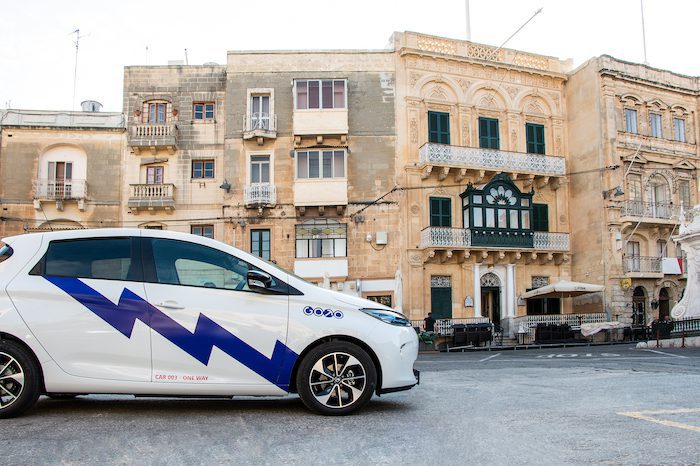
The car sharing system allows you to ‘hire’ a car only for the time that you need it. It is ideal for point-to-point trips, and the cars are really easy to pick-up and use. The electric cars are parked in appointed parking spaces, accessible 24 hours, 7 days a week.
You just download the app and use it to find the nearest car, open it and navigate to your parking spot when you arrive at your destination. You don’t even need to find a fueling station or fill up the cars because all the car sharing fleet is made up of Renault Zoe, completely electric. They are also easy to drive and fully automatic. Should you have any queries or difficulties, just press the call button and speak to a customer care agent directly from the car. Their customer care is stellar, way better than you will experience from other car companies around the island.
REGISTER a week before your trip using the code DAVIDSBEENHERE10 to get 10 FREE Driving minutes from GoTo car sharing.

Malta is so much more than sand, sun and sea. After just one visit, you’ll be in awe of this little island and all the charm and wonder it holds. The hospitality, world-class cuisine and intriguing culture are all there, so why aren’t you?
Time Zone: Central European Time (CET). Six hours ahead of EST in winter and 7 hours in summer.
Shopping: Typical opening hours are Monday to Saturday 9:00 am to 1:00 pm, and again from 4:00 pm to 7:00 pm. Some stores are open later during the summer months.
Nightlife: The Silema and St. Julian’s area boasts plenty of lively nightclubs, posh wine bars and casual pubs. Many venues impose a dress code and a small cover fee.
Please note that affiliate links are used in this post. If you purchase some of the tours recommended, I will receive a small commission at no extra cost to you. By purchasing items through my affiliate links, you’ll help reduce the ever-increasing expenses of running this site. Thank you!
Have you traveled to Malta before? Share your thoughts, travel tips and suggestions about the places you must see in Malta. Leave a comment below!
Counter
101 Countries • 1432 Cities
Greg says:
Interesting Top 20. To the list I would write a participation in the festa and visit the Palazzo Parisio and Gardens in Naxxar.
Indulgence says:
Must try the ‘qarabali mimli’ (stuffed courgettes in one of your pics) at Charlie’s Inn Rabbit House. It reminds me of my childhood – my mum used to cook it some Sundays. Where is Charlie’s?
Mae says:
Hi David!
Thank you for such interesting posts about the must see places in Malta and Gozo! I will be visiting in about 2 weeks so these articles were great reads! Initially, I was thinking of visiting all 3 UNESCO temple sites but due to time, I’m thinking of just visiting one of them. Based on your articles, it seems your top pick of the 3 temples would be the Hypogeum – do you think it’s worth 40 euros for a last minute ticket? Thanks so much for any feedback you can give!